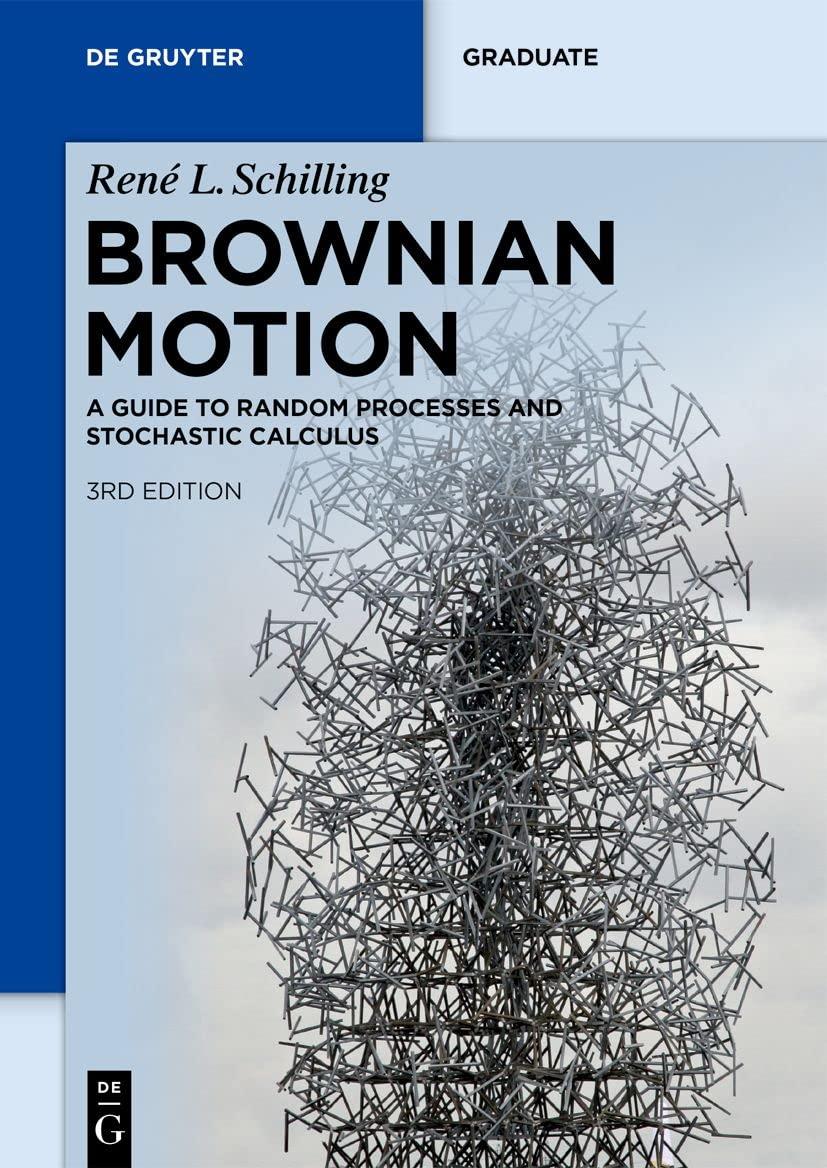Let (left(B_{t}ight)_{t geqslant 0}) be a (mathrm{BM}^{1}) and (sigma, tau) be two stopping times such that (mathbb{E}
Question:
Let \(\left(B_{t}ight)_{t \geqslant 0}\) be a \(\mathrm{BM}^{1}\) and \(\sigma, \tau\) be two stopping times such that \(\mathbb{E} \tau, \mathbb{E} \sigma<\infty\).
a) Show that \(\sigma \wedge \tau\) is a stopping time.
b) Show that \(\{\sigma \leqslant \tau\} \in \mathscr{F}_{\sigma \wedge \tau}\).
c) Show that \(\mathbb{E}\left(B_{\tau} B_{\sigma}ight)=\mathbb{E}(\tau \wedge \sigma)\)
Consider \(\mathbb{E}\left(B_{\sigma} B_{\tau} \mathbb{1}_{\{\sigma \leqslant \tau\}}ight)=\mathbb{E}\left(B_{\sigma \wedge \tau} B_{\tau} \mathbb{1}_{\{\sigma \leqslant \tau\}}ight)\) and use optional stopping.
d) Deduce from \(\mathrm{c})\) that \(\mathbb{E}\left(\left|B_{\tau}-B_{\sigma}ight|^{2}ight)=\mathbb{E}|\tau-\sigma|\).
Step by Step Answer:

Brownian Motion A Guide To Random Processes And Stochastic Calculus De Gruyter Textbook
ISBN: 9783110741254
3rd Edition
Authors: René L. Schilling, Björn Böttcher





